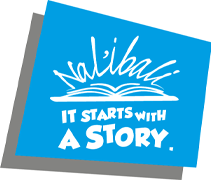Khumo Tapfumaneyi is a co-founder of Ethnikids, a specialist online bookstore sourcing and selling children’s books that feature characters of colour in different South African languages. Tapfumaneyi has made it her mission to ensure that as many children as possible can fall in love with reading by seeing children just like themselves reflected in the stories they read.
The Nal’ibali reading-for-enjoyment campaign caught up with her to find out why representation matters and what to look for in a good-quality children’s book.
When children see characters that look, live, and speak as they do, they become personally involved in the story. This is just one benefit of representation; what is your view regarding representation and diversity in storybooks?
My personal view is shaped by the academic Dr Rudine Bishop, who coined the phrase “windows, mirrors and sliding glass doors” to explain how children see themselves in books and how they can learn about the lives of others through literature.
When children see themselves and people who look like them positively represented in books, it affirms them. It prompts them to imagine new and different possibilities for themselves as the lead characters in their own stories. And, when they see cultures other than their own, they gain a deeper understanding and tolerance of others, helping them build the empathy skills they need to contribute to a healthier society.
Most of SA's leisure books for children are in English or Afrikaans; however, there is a substantially growing number of black authors producing excellent quality storybooks. Tell us more!
Yes! According to PASA, in 2016, only 2% of leisure books produced for children in South Africa were published in indigenous languages. That is hugely misaligned to the South African population and could explain why there hasn’t been a greater adoption of reading as a lifestyle.
Over the last few years, the most exciting development has been the hundreds of amazing storytellers and authors creating material for children in our mother tongues. The stories are ones that children can identify and relate to. We hope that this will generate more interest in reading amongst the South African population as it becomes more inclusive.
That must make it hard to choose. What does Ethnikids look for when selecting children’s books, and what should caregivers bear in mind when buying them for their children?
At Ethnikids, we stock many different types of children’s books to appeal to different tastes and needs, and all mainly having protagonists of colour. Our biggest genre is fictional African picture books, but history books, colouring books, comic books and autobiographies all written for children are also popular.
Diversity is essential. At our bookstore, you will find children’s books that seldom make it onto the shelves of mainstream bookstores. It’s crucial to give independent publishers and authors access to markets and cater to many different age and language groups.
Our advice when choosing books for children is to include children in the selection process. Try to consider their interests and make the process fun. The experience of reading and the association with books must be a special and enjoyable one.
Nal’ibali’s read-aloud story collection is now on your shelves! What do you love about this collection, and who would you recommend it for?
Firstly, we love that all of the stories are available in all 11 official South African languages. The set also consists of four books, each containing five stories, that’s 20 short stories in total. At just R120 for a set, it’s incredible value! The books also have an engaging element with discussion questions and activities for the kids to encourage greater comprehension.
